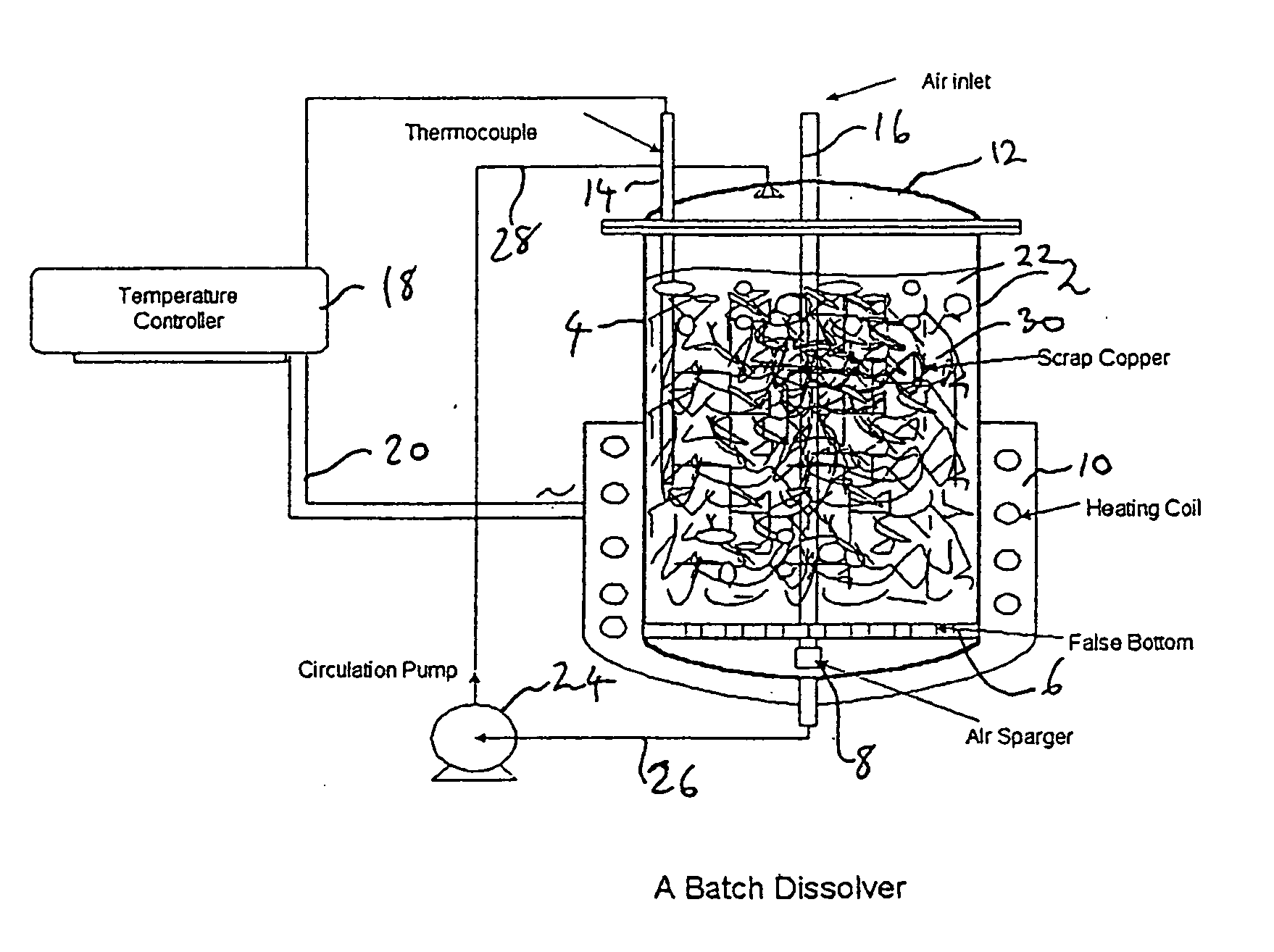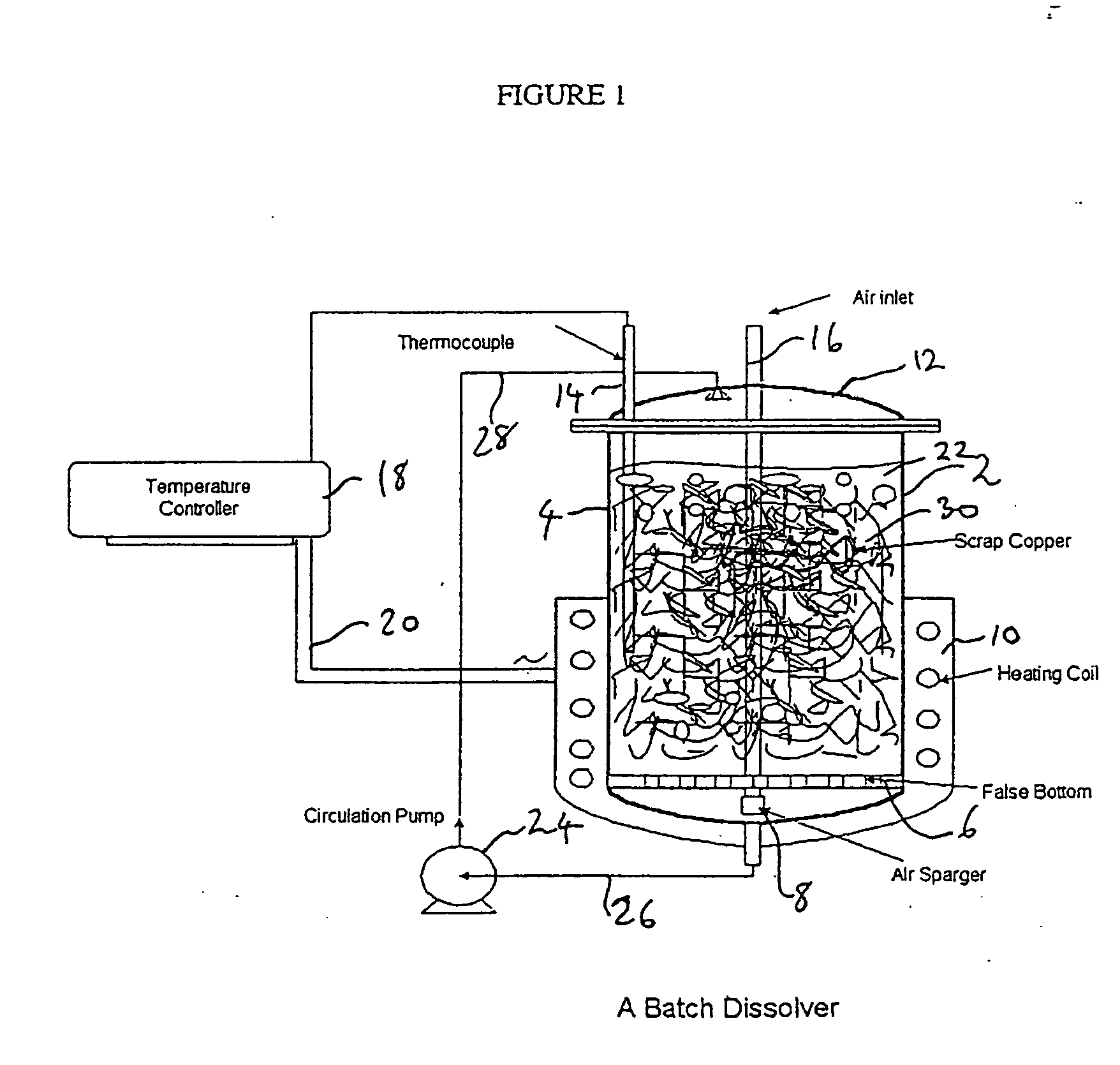Process for the dissolution of copper metal
a technology of copper metal and dissolution rate, which is applied in the direction of dissolving, inorganic chemistry, silver compounds, etc., can solve the problems of sparging to know how much carbon dioxide is added, how much of the added carbon dioxide was absorbed, and cumbersome preservative industry, so as to reduce the time from the start of the reaction, the initial dissolution rate is high, and the oxygen content of the sparging gas can be increased.
- Summary
- Abstract
- Description
- Claims
- Application Information
AI Technical Summary
Benefits of technology
Problems solved by technology
Method used
Image
Examples
examples
[0138] Examples of the process according to the present invention will now be described. The invention is intended to be illustrated, but not limited, by the examples. Most example described herein use carbonic acid, as opposed to one or more of the preferred acids. The examples are intended to show the process can provide the required product in an economically useful time, i.e., less than one day.
Example—batch dissolution
[0139] Dissolving studies were conducted either batch-wise or continuously, FIG. 1 shows a conventional batch dissolver used for the batch-wise operation. FIG. 4 shows a continuous dissolution process. The conditions used in the batch experiments are given in Table 1. The temperature was maintained at 45-55° C. The solution concentration of copper (g / l) as a function of dissolution time is shown in Table 2.
TABLE 1Leach SolutionEXPAmineCu#ID%CO2 %Volume, mlCharge, g1MEA-CO2 solution36.7126004002MEA-CO2 solution35.912200200
[0140]
TABLE 2Dissolution Time, hourEXP ...
example — continuous process
Example—Continuous Process
[0146] A continuous dissolver assembly (see FIG. 4) was used in the experiments described below. The assembly includes a one-liter size packed-tower dissolver (used in the batch dissolving experiments described above), a gravity controller, a temperature controller, a pH monitor, an air flow meter, a circulation pump and a pump for simultaneous withdrawal and replenishment of solutions. The gravity controller held about 1 liter of the product solution. The solution in the assembly was circulated between the specific gravity controller and the dissolver at a constant rate of 325 ml per min. Occasionally, carbon dioxide gas was bubbled through the bottom of the gravity control chamber to adjust the pH of the solution. In all experiments described below, the reaction temperature and specific gravity were controlled at 50±2° C. and 1.271±0.001, respectively. During a continuous dissolving experiment, copper is continuously dissolved and results in a gradual inc...
PUM
| Property | Measurement | Unit |
|---|---|---|
| temperature | aaaaa | aaaaa |
| temperature | aaaaa | aaaaa |
| temperature | aaaaa | aaaaa |
Abstract
Description
Claims
Application Information
 Login to View More
Login to View More - R&D
- Intellectual Property
- Life Sciences
- Materials
- Tech Scout
- Unparalleled Data Quality
- Higher Quality Content
- 60% Fewer Hallucinations
Browse by: Latest US Patents, China's latest patents, Technical Efficacy Thesaurus, Application Domain, Technology Topic, Popular Technical Reports.
© 2025 PatSnap. All rights reserved.Legal|Privacy policy|Modern Slavery Act Transparency Statement|Sitemap|About US| Contact US: help@patsnap.com



